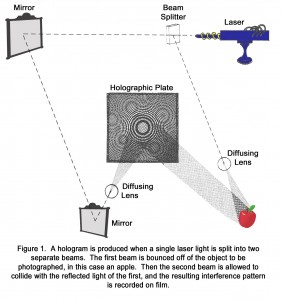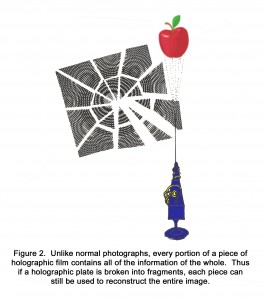Hologram Theory in Acupuncture and Chinese Medicine
Hologram theory is a fundamental principle existing in the universe. This theory can be applied to various practices, especially acupuncture and traditional Chinese medicine. The theories of acupuncture and traditional Chinese medicine include the observation and comprehension of the principles governing the human body and human life. The human body and human life are parts of the universe. The microsytem of the human body reflects the macrosystem of the cosmos (a holographic example). Human life follows the basic principles of the universe. Therefore, hologram theories can be applied everywhere in our study about the human body and life. Understanding and applying these holographic theories helps us comprehend the theories in acupuncture and traditional Chinese medicine. It is also helpful in diagnosing and treating various health conditions.
To understand the hologram theory as it applies to life and the universe, we can examine holographic photography. In holographic photography, any one portion of a hologram contains enough data to reproduce the entire hologram. A hologram is defined as being a three-dimensional image formed by the interference of light beams from a laser or other light source. In holographic photography, when a holographic plate is held up to regular light, it shows only a pattern of splatter marks. The hologram is only seen when the plate is viewed with a special projection device, which provides the appropriate light source. However, should the holographic plate be broken, any one fragment of the plate will show the entire image when viewed in the projection device.
Holograms do not just exist in holographic photography. Like previously mentioned, the universe itself is a giant hologram and every little piece of it contains the whole image. Thus, everything exists as part of a continuum. As David Bohm, a quantum physicist, explains, things can be part of an undivided whole, but all possess unique qualities. Whirlpools or eddies in a river, for example, have their own qualities. For example, whirlpools or eddies in a river have their own qualities such as size, rate, and direction of motion, but it is not possible to distinguish where the whirlpool ends and the river begins. Everything exists in dynamic interconnectedness with everything else.

